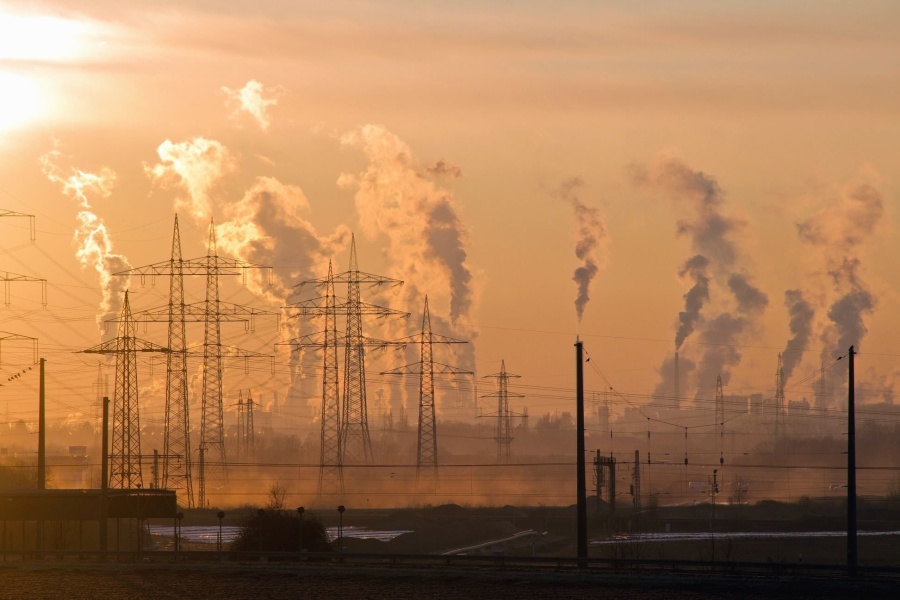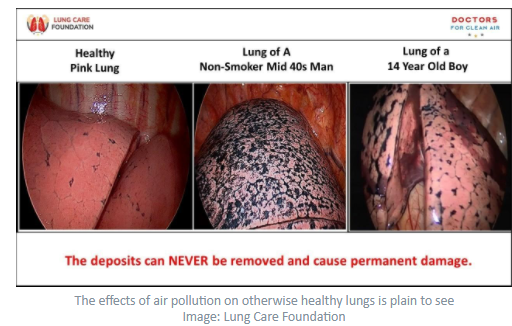
As a chest surgeon working in a New Delhi hospital, I operate on the lungs of over 600 patients every year for diseases ranging from tuberculosis to lung cancer. At the start of my career in the late 1980s, I always saw pink lungs, except in smokers. Sadly, due to the high levels of air pollution in the air that we all breathe, means I rarely see normal pink lungs in any patient these days. What shocks and scares me, even more, is that I regularly see children as young as 14-16 years, with no history of active or passive smoking having black deposits on their lungs.
Even more disturbing is the change in the demography of my lung cancer patients. In the late 1980s, more than 90% of lung cancer patients were smokers – typically men in their 50s or 60s. But one 2018 study found that 50% of lung cancer patients in North India are now non-smokers – and that more than 21% of patients were below the age of 50. The most disturbing experience of my life was to break the news of stage-four lung cancer to a 28-year-old girl from a non-smoking family – a family that was preparing for her marriage.

When I checked with colleagues from cancer centres across the country, they echoed my observations, although the exact figures have varied slightly. To show the impact of breathing in a polluted city, the Lung Care Foundation, Help Delhi Breathe, Jhatkaa and Sir Ganga Ram Hospital, New Delhi, set up a giant billboard of artificial lungs. The lungs were made of HEPA filters and had an exhaust fan behind them to mimic the act of breathing. On day one, when this lung replica was uncovered, it was white. To our horror and surprise, in just six days – breathing the same air that we breathe in Delhi – the lung replica had turned black. If this artificial lung can become black in only six days, imagine what is happening to our lungs, breathing the same toxic air over 25,000 times a day from the first breath of our life.
Polluted air damages not only the lungs but every organ in our body, including the heart, blood vessels, brain, pancreas, kidneys, urinary bladder, and even reproductive organs. Shockingly, this damage does not have to wait for us to be born; it strikes us first inside our mothers’ wombs. Unequivocal evidence is available that pregnant mothers exposed to high levels of air pollution have toxic chemicals in the placenta (the link between the mother’s womb and the growing baby). This leads to congenital disabilities, low birth weight, fetal deaths and premature births. These babies never grow to their optimum potential and have a lower brain and physical development. The experiences of my doctor colleagues from across the world from different medical specialities resonate with these findings.

According to WHO, air pollution causes 1.8 million deaths due to lung cancer every year and is responsible for 29% of lung cancer deaths overall. Today, an entire generation is facing this hidden ‘chemical warfare’, which can cause severe and permanent damage.
According to another study by Berkley Earth, exposure to 22 micrograms per cubic metre (µg/m3) of PM 2.5, pollution is equivalent to smoking one cigarette. This means that I, a so-called non-smoker, may as well have smoked 2,372 cigarettes each year just by breathing the air in Delhi, which has an annual average PM 2.5 of 143 µg/m3.
annual average PM 2.5 of 143 µg/m3. This is not just a problem in India, however. In 2016, 91% of the world population was living in places which do not meet WHO air-quality standards. WHO data further reveals that nine out of 10 people breathe air containing high levels of pollutants and 7 million premature deaths annually are linked to air pollution.
Furthermore, pollution-impacted communities are also more vulnerable to infectious diseases like COVID-19. The Harvard T.H. Chan School of Public Health reported that an increase of only 1 µg/m3 in PM 2.5 exposure is associated with an 8% increase in the COVID-19 death rate. The Italian Society of Environmental Medicine has reported that “the rapid increase of contagion rates that has affected some areas of Northern Italy could be tied to atmospheric particulate pollution acting as a carrier and booster there”.
Today, COVID-19 has brought about unprecedented behavioural changes across the globe. Most people are wearing masks, businesses are encouraging staff to work from home, more and more countries are promoting cycling, and every individual is talking about COVID-19. It is ironic that air pollution, which has a much higher annual death toll than COVID-19, has never inspired even a fraction of such behavioural change.
Despite the severe and permanent damage to our health caused by air pollution and its global spread, political leaders, decision-makers, as well as large communities, are still unaware of the gravity of the situation. There is no unified global effort towards achieving the kind of clean air we experienced during the COVID-19 lockdowns. Overlooking air pollution with its health consequences, for short-term economic benefits, is not an option. We have to act for “Clean Air” now. The time to prioritise human health over national economic health is now.
This article is brought to you in collaboration with Global Shapers New Delhi Hub, for more information on their work, visit https://instagram.com/globalshapersdelhihub?igshid=83syr2nqmc06

